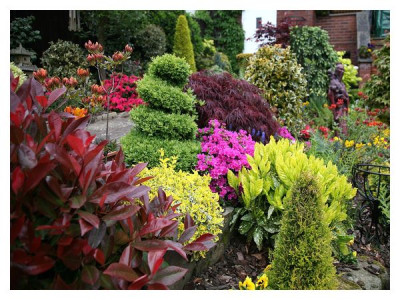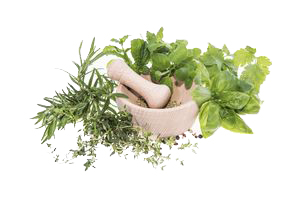Cornelian cherry, European cornel or Cornelian cherry dogwood / Cornus mas
Shrub or small tree of the genus Dogwood of the Dogwood family. The name should not be identified with the genus Cotoneaster.
Deciduous tree 5-6 m high or multi-stemmed shrub 3-4 m high. Branches horizontally spread, with blackish bark. The leaves are opposite, simple, 3.5-8 cm long, oval, shiny, bright green, with 3-5 pairs of veins.
The root system is fibrous, mainly at a depth of 40 cm.
The flowers are small, golden yellow, bisexual, collected in umbellate inflorescences; in an umbrella 15-25 flowers. The flower is regular, bisexual, the calyx is barely noticeable with four cloves, the corolla is yellow with four petals, there are four stamens, the ovary is lower two-celled, the style is simple, a fleshy disc is developed at its base. It blooms before the leaves bloom in April at a temperature of 8-12 ° C, flowering is extended for 10-14 days. The fruits ripen from the end of August - in September.
The flower is regular, bisexual, the calyx is barely noticeable with four cloves, the corolla is yellow with four petals, 4 stamens, the ovary is lower two-celled, the style is simple, a fleshy disc is developed at its base.
The fruit is a juicy drupe, the stone is elongated-oval. Dogwood fruits have a different shape and size. They are short and long oval, spherical and pear-shaped. The surface of the fruit is smooth, bumpy, slightly bumpy; the color is light red, red, dark red, dark purple and almost black. The average weight of the fetus is 2-6 grams. The weight of 100 fruits, together with the seeds, varies within fairly significant limits, depending on their size and shape - from 190 to 400 grams. The weight of the pulp from the weight of the fruit is from 68 to 88%.
Common dogwood has a well-developed fibrous root system; when transplanted, it suffers from drying, which leads to poor engraftment of seedlings. Therefore, dogwood seedlings, like other fruit species, must be cut to balance the above-ground and root systems of the plant. On the other hand, the fibrous root system of the dogwood develops in the upper soil layer, as a result of which the dogwood suffers from a lack of moisture in the first years after planting, especially on light (sandy) soils. Under these conditions, the plant needs to be watered more often.
The transplantation of adult (at the age of 7-15) fruit-bearing plants dogwood successfully tolerates. It is worth doing this in the fall, but first it is necessary to carry out a “rejuvenating” pruning. If the dogwood is formed in the form of a bush, it is necessary to additionally remove 1-2 trunks and keep the preliminary orientation of the plant in space in the new place and water it well. The fruiting of such trees is restored in a year.
In order to accelerate the fruiting of dogwood seedlings, it is necessary to tighten the conditions for plants: to reduce the level of nutrient and moisture supply, especially in the second half of summer, since these factors contribute to vegetative growth and delay the onset of fruiting.
Care: common dogwood has a well-developed fibrous root system; when transplanted, it suffers from drying, which leads to poor engraftment of seedlings. Therefore, dogwood seedlings, like other fruit species, must be cut to balance the above-ground and root systems of the plant. On the other hand, the fibrous root system of the dogwood develops in the upper soil layer, as a result of which the dogwood suffers from a lack of moisture in the first years after planting, especially on light (sandy) soils. Under these conditions, the plant needs to be watered more often.
The transplantation of adult (at the age of 7-15) fruit-bearing plants dogwood successfully tolerates. It is worth doing this in the fall, but first it is necessary to carry out a “rejuvenating” pruning. If the dogwood is formed in the form of a bush, it is necessary to additionally remove 1-2 trunks and keep the preliminary orientation of the plant in space in the new place and water it well. The fruiting of such trees is restored in a year.
In order to accelerate the fruiting of dogwood seedlings, it is necessary to tighten the conditions for plants: to reduce the level of nutrient and moisture supply, especially in the second half of summer, since these factors contribute to vegetative growth and delay the onset of fruiting.
Food use: juicy dogwood drupes have a pleasant aroma, sweet and sour, tart, astringent taste. Dogwood is used fresh and processed in cooking, confectionery and canning industries. Dogwood is used to make jam, jam, jam, jelly, and is used to make juices, syrups, compotes, soft drinks, liqueurs, and wines. In the Caucasus, dried turshu and lavash are very popular. Turshu usually contains 10-15% acids, 30-40% invert sugar. Lavash is a thinly rolled dry marshmallow made from the pureed mass of the pulp of wild-growing or cultivated forms of dogwood fruits. Lavash usually contains 15-22% water, 12-16% acids, 35-40% total sugar.
In food, not only the pulp of the fruit is used, but also the bones, which serve as raw materials for the preparation of a coffee surrogate. Dogwood leaves are brewed instead of tea. Sometimes the fruits are added to meat and fish dishes and soups as a condiment.
Ornamental Horticulture Uses: Dogwood plants are very ornamental due to their early and abundant flowering, dense intense green foliage, bright, beautiful fruits. They tolerate shearing well, are resistant to dust and gases. They are used in sunny and semi-shady areas to create hedges, under-trees, groups of shrubs.

No questions about this product, be the first and ask your question.











